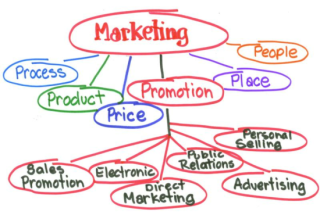While marketing is a dynamic and ever-changing field of study and profession, one major underlying tool marketers utilize is psychology. Innovative marketers have a true understanding of their target market’s actions, and use this expertise to shape their client’s approach. Understanding why a generation, society or any group of people acts the way they do is essential to connecting and communicating efficiently with them. 
However, there are other ways to apply psychology on the job to improve not only your career, but also your happiness and personal life. I had the pleasure of attending a guest lecture by Dr. Mark McKinney and Dr. Steve Fedorko in the Temerlin Advertising Institute at Southern Methodist University, where they spoke about this notion in depth. As psychologists who spent many years in the marketing and advertising world, they had an interesting perspective on how to succeed in business. Their book, My Client Is The Devil, is a “groundbreaking book to help client service professionals deal with stress on the job by learning simple techniques to become more psychologically hardy”. While I have not yet read the book, their presentation inspired me to take a step back and evaluate my perspective on life.
Client service fields are notorious for “burning out” their employees. Drs. McKinney and Fedorko attempt to alleviate the stress placed on these employees by emphasizing the importance of three competencies: control, commitment and challenge. Modern psychology has found that people who exhibit control in their personal and professional life, stay committed to their goals and readily accept challenge tend to be more resistant to stress and have a contagious effect on the people around them.
Everyone knows that positive people are more fun to be around, but sometimes people need a reminder to spread a little positivity. Drs. McKinney and Fedorko proposed a tool to help alter our perspective that may initially seem trivial, but has truly transformed my daily outlook in a positive manner. Rather than looking at a situation and making outward statements such as “why me?” or “this isn’t fair,” instead ask yourself what positive outcomes may come of this situation and assume that others are well-intended. The Drs. provided examples of how to apply this attitude that ranged from dealing with road rage to major work dilemmas. By practicing this attitude in smaller, every-day situations, it transforms into a habit.
a reminder to spread a little positivity. Drs. McKinney and Fedorko proposed a tool to help alter our perspective that may initially seem trivial, but has truly transformed my daily outlook in a positive manner. Rather than looking at a situation and making outward statements such as “why me?” or “this isn’t fair,” instead ask yourself what positive outcomes may come of this situation and assume that others are well-intended. The Drs. provided examples of how to apply this attitude that ranged from dealing with road rage to major work dilemmas. By practicing this attitude in smaller, every-day situations, it transforms into a habit.
Epictetus, a philosopher and teacher in Rome in the first century, said, “Men are disturbed not by things, but by the view which they take of them.” While this idea has been around for thousands of years, in our modern world full of constant business and high expectations it is easy to forget how big of a role our attitude plays in our happiness and eventually our overall success. Taking a moment to think before we react truly puts the problem we are dealing with into perspective.






 2. Teamwork really does make the dream work.
2. Teamwork really does make the dream work.

